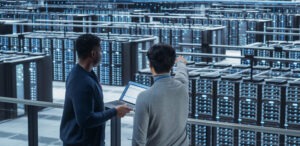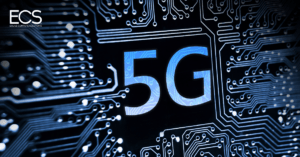Have you ever paid for a service (haircut, oil change, etc.) only to wonder why you had been doing it yourself all this time? Unsupervised learning lets humans “outsource” the job of data analysis to machine learning algorithms — allowing them to discover data patterns and groupings without user input.
The speed at which these algorithms can analyze data, coupled with powerful hardware, makes unsupervised learning ideal for many data problems. However, there are some situations where supervised learning is a better choice. The principles from the following scenarios can help us understand the strengths and weaknesses of unsupervised learning.
Imagine that you’re paying someone to do two different jobs.
Scenario 1: You pay someone to mow the lawn but don’t specifically care about how they carry out the job. When you get back, the lawn looks great, and the convenience of someone else doing the job gives you time to care for other important tasks.
Scenario 2: You pay someone to build the writing shed you’ve been dreaming of. If you were to leave it entirely up to the contractor, they would likely fail to meet your vision since you have specific ideas of what you want. This is a job where you’re not comfortable with missing any details.
What do these examples teach us about the usefulness of unsupervised learning? There are a few requirements when using this type of machine learning. For example, supervised learning is almost always preferred if accuracy is critical or you are trying to achieve a particular outcome. However, unsupervised learning will save you time and effort if you’re trying to gain insights from large amounts of unlabeled data. It’s also great for when you’re not particularly sure about what you’re trying to achieve, as the emerging patterns often lead to unexpected insights.
Unsupervised Learning Is Helping Users Extract Better Data Insights
Machine learning is helping businesses use data as a business asset. And unsupervised learning is helping them increase the ROI of their data investments. How is this technology being used in the real world?
- Computer vision. Deep learning and unsupervised learning enable the use of generalized algorithms in computer vision. This flexibility speeds up insights and allows teams with less specialized talent to leverage machine learning.
- Recommendation engines. When shopping online, you’ve likely run into recommended purchases and may even have purchased more because of it. Unsupervised learning analyzes purchase data from you and others who buy similar products to present hyper-relevant recommendations.
- Medical imaging. Unsupervised learning provides the machine learning capabilities to perform a fast and accurate diagnosis. It speeds up tasks like image detection, classification, and segmentation.
Unsupervised learning is capable of making impossibly complex analysis feasible for organizations. But to power this machine learning tool, users need to ensure their hardware infrastructure can run algorithms in a timely manner. Equus Compute Solutions can help you custom build, deploy, and manage infrastructure built for machine learning performance. If you want to learn more about what we can help you build, let’s talk.







